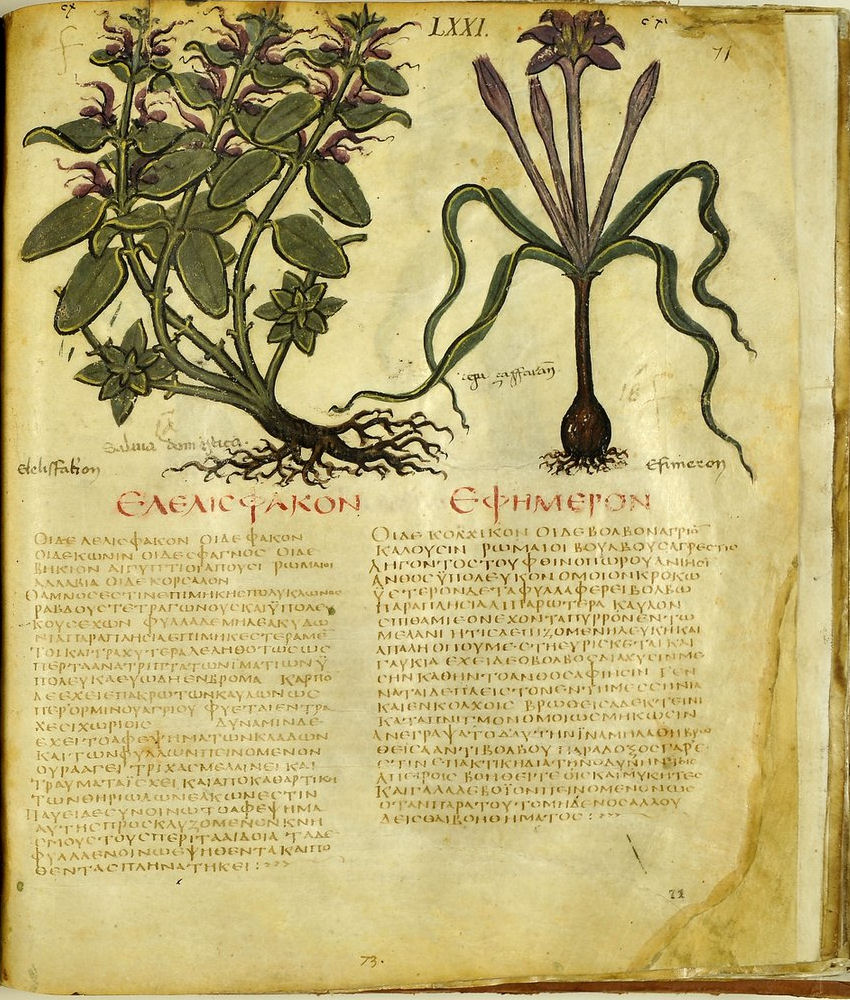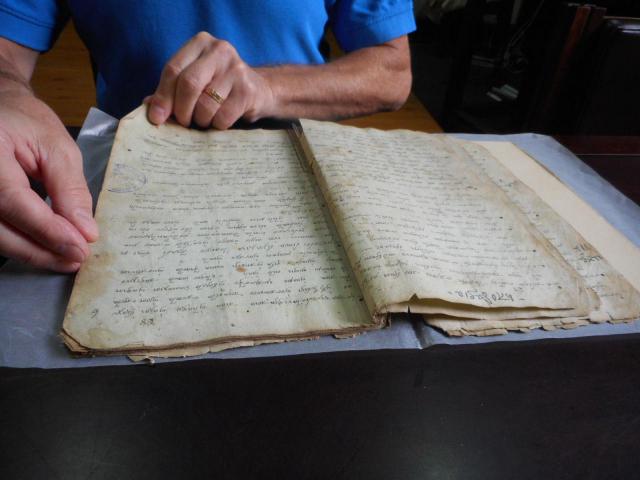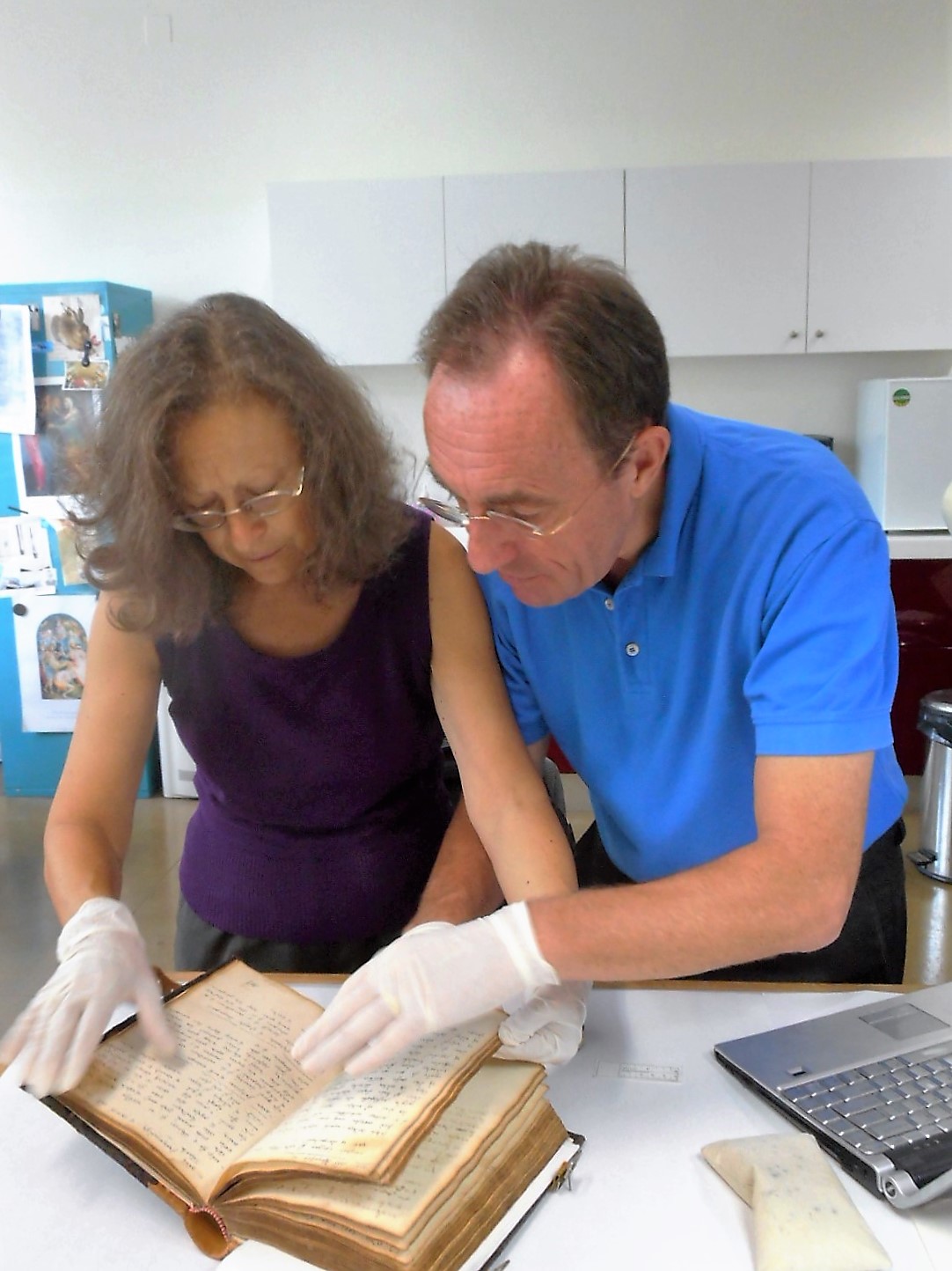In the late
19th and early 20th centuries, classical scholar Hermann Diels guided a team of
philologists (scholars who study literary sources and records to establish
their authenticity and original form) to assemble a catalogue of Greek medical texts.
This undertaking served as the starting point for Alain Touwaide, PhD, later
joined by his wife and companion in scientific adventures Emanuela Appetiti, to
compile an updated catalogue of Greek medical manuscripts. Published in October
2016 by Routledge Press, A Census of
Greek Medical Manuscripts: From Byzantium to the Renaissance is the
culmination of 30 years of travel, research, and discovery.
Touwaide’s
efforts have expanded the original catalogue of Greek medical texts by more
than 50%, and Census includes manuscripts with texts that delve into the
practice of dream interpretation, herbal medicine, diet, and planting calendars.
In Touwaide’s own words, he listed any text with the common point of “the care
of human health” (oral communication, December 2, 2016).
Touwaide
explained: “[The Greek] concept of medicine is much closer to what is now
integrative medicine. For them, human health and, by consequence, also disease …
is the result of the interaction between the environment and the individual.” Therefore,
he said, “plants were key” in ancient Greek medical practice. 
The
subtitle of the work, From Byzantium to
the Renaissance, serves only to date the manuscripts themselves rather than
the information they contain. Many of the manuscripts, though written between
800-1599 CE, contain transcriptions of much older works dating back to
Hippocrates, who is considered the “Father of Medicine” and who lived and
worked in the fifth and fourth century BCE.
Extant
Greek-language medical manuscripts, however, tell only part of the story. They
reference some works that have been lost to historians, or perhaps exist in
another part of the world, copied into another language. “Much of the Greek
scientific literature has been translated into Arabic, and also into Georgian,
Armenian, Slavic languages, Coptic — all these languages of the Near East,”
Touwaide said. “Many of these texts … have been preserved in these other
languages while we don’t have them in Greek.”
The time
period covered by Census includes the rise of the Byzantine Empire,
which grew in prominence from a Roman settlement to a powerful political entity
in its own right after the fall of the Roman Empire in the fifth century CE
until it was conquered by the Ottoman Empire in 1453.
At its
peak, the Byzantine Empire included much of the land surrounding the
Mediterranean, and its capital, Constantinople (now Istanbul, Turkey), became
one of the largest and wealthiest cities in Europe. Also known as a city of
learning, it contained the University of Constantinople and the Imperial Library,
which is said to have housed more than 100,000 volumes at its peak. It was at
this university and library that many of these ancient texts were preserved thanks
to key advancements in book technology: the change to parchment from the more
delicate papyrus and the binding of books instead of rolled scrolls.
“There was
a revolution in book production that can be compared exactly to what is
happening now in the digital world,” Touwaide said, comparing the phenomenon to
the adoption of digital e-book copies instead of physical copies. “At that
time, they changed the way of writing books … and so they converted all the
available texts into the new writing and they abandoned or destroyed whatever
book it was in the ancient writing system.” These manuscripts followed the
people who created them. After the fall of Constantinople in 1453, refugees
from Byzantium streamed into Italy, France, and Spain, where scholars and
scientists continued to produce works in Greek during the Italian Renaissance. 
Misconceptions
abound regarding the information contained in these manuscripts. “One thing
needs to be clear,” said Touwaide. “There is an idea that is very much diffused
in common culture that these manuscripts were copied by monks in the Dark Ages
who didn’t know what they were doing…. Manuscripts were not copied exclusively by
monks but mostly by physicians. There were no ‘dark ages.’ These people were by
no means in an era of ignorance…. They knew exactly what they were doing.”
These manuscripts, therefore, give a historian or researcher a glimpse of a
medical tradition that is more than merely a snapshot to the past. Annotated by
physicians sharing their own observations, these texts show the evolution of
medicine, care, and treatment in the Greek tradition.
Touwaide
compares this ongoing study of the effects of plants to modern clinical trials
spanning seven centuries. “Instead of considering that these texts are
quackery, superstition, magic, all these kinds of ideas, we should look at them
as clinical trials. What we are doing now, even if we do it on 10,000 patients,
is without comparison to what we have in the ancient texts,” he added.
Physicians recorded their observations, kept what worked, and discarded what
did not.
Touwaide
and Appetiti, both of whom formerly were affiliated with the Smithsonian Institution
in Washington, DC, founded the nonprofit Institute
for the Preservation of Medical Traditions in 2007 to research traditional medicine in the hopes
of creating new advances in the field of modern medicine. In 2010, the
Institute collaborated with the Smithsonian’s Center for Conservation and
Evolutionary Genetics to study the findings of a second-century BCE shipwreck
off the coast of Tuscany, Italy, whose excavated artifacts included intriguing
medical equipment.1 Thought to belong to a physician on board, one
of the artifacts was a tin container holding small, circular tablets thought to
be pills. Preliminary DNA sequencing performed on the organic contents of the
tablets indicated that they contained common edible garden plants: carrot (Daucus carota, Apiaceae), parsley (Petroselinum crispum, Apiaceae), celery
(Apium graveolens, Apiaceae), wild
onion (Allium cepa, Amaryllidaceae),
radish (Raphanus sativus, Brassicaceae),
and cabbage (Brassica oleracea,
Brassicaceae), with the possible addition of hibiscus (Hibiscus spp., Malvaceae) and yarrow (Achillea millefolium, Asteraceae).
All of
these plants, Touwaide points out, were mentioned in ancient medical texts as
treatments for a variety of complaints. While food was inextricably linked with
medicine in ancient practice, this discovery, thus far the only one of its
kind, indicates that medicinal preparations were far more sophisticated than
simply digging up a plant and eating it in order to obtain its benefits.
A Census of Greek Medical
Manuscripts is the
culmination of this effort to combine ancient tradition with modern innovation,
uncovering previously undocumented manuscripts and texts, and correcting
out-of-date information. Incorrect information regarding the location of
manuscripts, such as when private collections are sold, can lead to confusion
for any researcher wishing to examine original manuscripts 
Touwaide
and Appetiti visited collections as famous and varied as the Pierpont Morgan
Library in New York, the Vatican Library, the British Library, and the
Bibliothèque Nationale de France as well as small, privately owned collections
scattered across the globe in order to catalogue and identify each manuscript. Additions
to Diels’ catalogue list the title, the author if known, to which collection
the manuscript belongs, and a brief overview of its contents. This information
provides immense value to researchers, who can look up a manuscript and know
beforehand if it contains subjects relevant to their study. manuscript. Additions
to Diels’ catalogue list the title, the author if known, to which collection
the manuscript belongs, and a brief overview of its contents. This information
provides immense value to researchers, who can look up a manuscript and know
beforehand if it contains subjects relevant to their study.
“A Census of Greek Medical Manuscripts is
long overdue and most welcomed,” wrote John M. Riddle, PhD, Alumni
Distinguished Professor Emeritus of history at North Carolina State University
and former president of the Society for Ancient Medicine and the American
Institute for the History of Pharmacy (email, November 14, 2016). “On top of
that, the fact that a scholar such as [Touwaide] undertook and successfully
completed an arduous, painstaking, and expensive task makes the book’s
appearance all the more meaningful.”
The work of
decades for Touwaide and Appetiti serves as an invaluable resource for
classical scholars around the world, in the tradition of Diels and his original
catalogue. As medical science draws increasingly on natural products research
for new sources of drugs, perhaps the knowledge recorded by ancient Greek
physicians holds the key to the next big discovery.
—Hannah Bauman
Photo Captions (from top): - Representation of a thistle (Eryngium spp., Apiaceae). Manuscript: Pierpont Morgan Library, New York. M 652, 10th century.
- Illustration of sage (Salvia officinalis, Lamiaceae) from De materia medica. National Library in Naples (MS Neapolitanus olim Vindobonensis graecus 1). 7th century CE.
- Touwaide studying a medical manuscript (iatrosofion) at the Korai Library on the Greek island of Chios.
- Appetiti (left) and Touwaide (right) examine a manuscript.
Reference
- Research
Breakthrough: 2000-Year-Old Medicine Revealed. Institute for the Preservation
of Medical Traditions website. September 24, 2010. Available at: http://medicaltraditions.org/institute/news/168-research-breakthrough-2000-year-old-medicine-revealed. Accessed December 8, 2016.
|